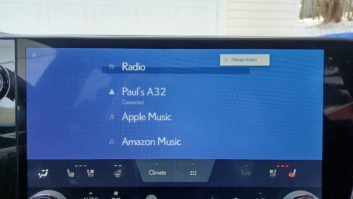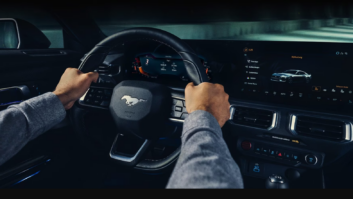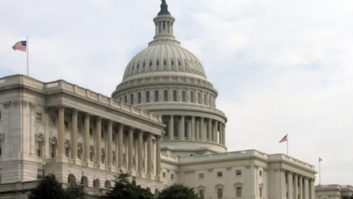Radio has been traditionally focused on the way that it sounds, the audio processing, the formats, playlists and personalities. With the coming of RDS, and then HD Radio, it also needs to pay attention to the way it looks. A panel of experts gathered this week for an NAB webcast to address that concern. The good news is that a set of best practices is well developed.
The webcast “Radio’s Future in the Car: Best Practices for the Digital Dash” featured panelists Fred Jacobs, president of Jacobs Media; Greg Strassell, senior VP programming for Hubbard Radio and Glynn Walden, broadcast engineering consultant.
Jacobs began the webinar with a discussion of an audit he conducted of how radio is displayed in cars. A sweep was made of the FM band in several markets, recording a snapshot of each station’s dashboard displays on both HD and RDS. “It was an eye-opener for us.” noted Jacobs. “Much of this information was set up years ago, often without the input of the program director. It reflects the input of prior ownership or management.”
The sweeps were evaluated, responses scored, and results entered into a data base. From the results, Jacobs developed a set of eight best practices.
First on Jacobs’ list is to conduct a review of an entire market, much as he did to develop his best practices. Use cars with both RDS and HD displays. Engineers and programmers should do this together. He adds that it would also be good to include the sales manager on these audits, as the way commercials appear in these displays is also important.

“Don’t just look at how artist and song titles are displayed,” continued Jacobs. “Look at what’s going on when talent is talking, during the news, and during commercial breaks. See where there are untapped opportunities to enhance your brand.”
Second, standardize the use of RT and PS fields. The 64-character RT field is for artist and song title information at music stations, and can be used for host and guest names in talk formats. Use of consistent capitalization style and removal of metadata notes are important.
Third, optimize branding. Jacobs notes that many opportunities are missed to include a station’s brand, personalities, shows and advertisers. He adds that research conducted by Xperi shows that listeners better recall an advertiser’s name and phone number when that information is repeated in the text display.
Fourth, display personalities and programs. “A station’s biggest capital investment is usually in the talent it hires and the shows it airs,” said Jacobs. “Yet these are largely neglected on the display. Radio is actually much better at promoting the music industry through artist and song titles than it is at promoting itself.”
Fifth, stations need to strategize spoken word displays. Many news/talk stations that Jacobs audited had displays left over from music formats. Stations using spoken word formats need to have clearly identified and branded shows, hosts and guests.
What to do about newer format IDs is sixth on the list. Not all formats are included in the standard RDS format IDs. One example is hip-hop. Jacob notes that some stations may use R and B as the closest entry, and some may use the “other” entry. “Other is just not an acceptable option,” said Jacobs.
Seventh, review all artwork. Jacobs observes that inconsistencies abound with artworks and graphics, but this is an opportunity for radio to shine on HD. Images included with ads during commercial breaks should also be considered.
Finally, improve HD Radio multicast displays. Jacobs’ sweep revealed that HD1 channels were usually well identified and branded, but HD2 and HD3 channels were often lacking. A good example that Jacobs shared was WIP in Philadelphia. They simulcast AM all-news giant KYW 1060 on their HD2, and it is clearly identified with both logo and text.












